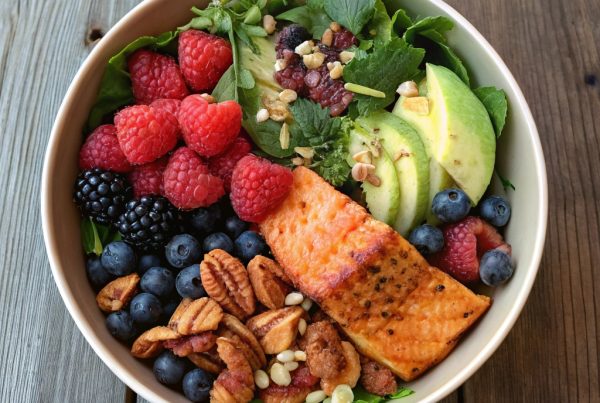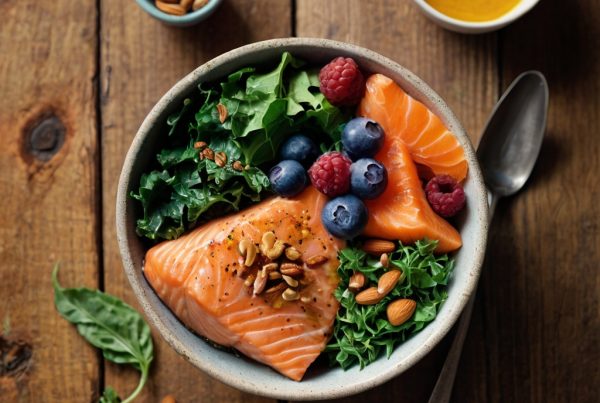Are you pushing yourself harder than ever before? Training relentlessly, chasing peak performance… but feeling sluggish, sore, and struggling to recover?
It’s a common story. We focus on intensity, on adding more reps, more miles, more everything – often without considering the silent saboteur: inflammation.
The truth is, excessive training creates damage that hinders progress.
Imagine consistently feeling energized, recovering faster, and maximizing your potential – all through what you eat.
You want to stick around for point number 6, as it might just reveal the long lost way to supercharge athletic performance through nutrition.
Athlete Recovery Strategies Begin
It’s frustrating, isn’t it? Spending hours pushing through workouts, only to feel worse afterward – a nagging ache, persistent fatigue, or just a general sense of being ‘off’.
That familiar post-exercise soreness might seem like just part of the game, but it could be signaling something deeper.
While top athletes are optimizing recovery with targeted nutrition, many are still relying on ice baths and generic advice.
The key shifts from simply treating symptoms to actively fueling the body’s natural repair processes.
Every missed opportunity for optimal recovery is a diminished return on your training investment – slowing progress and increasing risk of injury.
Here’s what most sports science experts don’t emphasize enough: the food you consume directly impacts how quickly—and effectively—your body rebuilds after intense effort.
Let’s explore exactly how an anti-inflammatory diet can transform your recovery and unlock peak performance.
Inflammation’s Role in Injury
With recovery for athletes being a complex process, it’s important to understand how inflammation plays a key role in injury.
Inflammation is your body’s natural response to damage – think cuts, bruises, or intense workouts. It’s meant to protect and heal. However, when this response becomes chronic, it can actually hinder recovery.
During strenuous exercise, muscle tissue experiences microscopic tears. This triggers an inflammatory cascade – the body releases chemicals to repair the damage. A short-term, controlled inflammation is beneficial; it signals the body to rebuild stronger muscles. But if this process isn’t properly regulated, prolonged inflammation can actually slow down healing and contribute to chronic pain or re-injury.
Consider how an athlete might experience delayed onset muscle soreness (DOMS). That familiar ache you feel a day or two after a tough workout? Much of it is driven by ongoing low-grade inflammation. This persistent inflammation can interfere with the rebuilding process, preventing muscles from fully recovering and potentially leading to weakness or stiffness.
Cellular Damage & Recovery
During intense athletic activity, your body undergoes a tremendous amount of stress. This creates cellular damage – tiny injuries to muscle fibers, connective tissues, and even cell membranes. Think of it like this: you’re pushing your system to its absolute limit.
This constant barrage of microscopic trauma isn’t just normal; it’s unavoidable when you’re demanding peak performance. But the key is how your body responds – and that’s where inflammation comes in.
Inflammation is a natural healing process, absolutely essential for repairing those damaged cells. However, excessive or prolonged inflammation actually *hinders* recovery. It’s like throwing sand on a wound; it slows down the healing process.
The goal of an anti-inflammatory diet isn’t to eliminate inflammation entirely – that’s impossible and frankly, undesirable. Instead, it’s about managing it, keeping it in check so your body can efficiently rebuild and repair itself after training.
By focusing on foods rich in antioxidants and phytonutrients, you’re providing the necessary tools for your system to minimize cellular damage and accelerate recovery – ultimately leading to improved performance and reduced risk of injury.
Gut Microbiome’s Influence on
Yes, the gut microbiome’s influence on athlete performance is a fascinating area of research. It’s all about how your digestive system impacts everything from energy levels to muscle recovery.
 Think about it – your gut is home to trillions of bacteria, and these aren’t just there for digestion. They actively communicate with your brain and nervous system.
Think about it – your gut is home to trillions of bacteria, and these aren’t just there for digestion. They actively communicate with your brain and nervous system.
These tiny organisms can produce neurotransmitters – chemicals that control mood and motivation – which directly affect athletic performance. A healthy microbiome means a better baseline level of mental focus and drive.
Furthermore, the composition of your gut bacteria influences how efficiently you absorb nutrients from food. This is crucial for fueling intense training sessions and supporting muscle repair after exertion.
For example, certain types of bacteria help break down carbohydrates more effectively, providing a sustained energy source. Others aid in the absorption of vitamins and minerals essential for optimal athletic function.
So, nurturing your gut microbiome – through diet and lifestyle choices – isn’t just about digestive health; it’s about supercharging your ability to perform at your peak.
The Power of Omega-3s
Think about how demanding training can be – pushing your body to its limits. You’re creating inflammation wherever you go! That’s where omega-3s come in and become a really powerful tool for athletes.
Omega-3 fatty acids, primarily found in fish oil and some plant sources, are renowned for their anti-inflammatory properties. They work by reducing the production of inflammatory molecules within your body.
When you’re training intensely, muscle damage occurs – this naturally triggers an inflammatory response. This inflammation is a *necessary* part of the repair process, but excessive or prolonged inflammation can actually hinder recovery and potentially lead to injury. Omega-3s help modulate that response, keeping it in check.
Specifically, EPA (eicosapentaenoic acid) and DHA (docosahexaenoic acid), two key omega-3s, have been shown to reduce muscle soreness after exercise. You’ll find these concentrated in fatty fish like salmon, mackerel, and tuna – a fantastic natural source!
Anti-Inflammatory Foods – A List
People who push their bodies to the limit through athletic training create a lot of inflammation. It’s unavoidable when you’re stressing muscles and tissues. But managing that inflammation is key to not just recovery, but actually supercharging performance! Let’s talk about how food can help – specifically, focusing on anti-inflammatory foods.
Think of it this way: your body needs tools to repair itself after intense workouts. A diet rich in anti-inflammatory foods provides those tools, speeding up the healing process and reducing soreness. It’s not just about feeling better; it’s about getting back into the game faster and stronger. Here’s a list of some key ingredients you should be incorporating:
Fatty Fish – Salmon, tuna, mackerel, and sardines are packed with omega-3 fatty acids. These fats are fantastic at reducing inflammation throughout your body. They help repair muscle tissue and calm down the immune response after intense training.
Berries – Blueberries, strawberries, raspberries, and blackberries are bursting with antioxidants. Antioxidants fight off free radicals that contribute to inflammation. Plus, they’re delicious! Adding them to smoothies or yogurt is a simple way to boost your intake.
Leafy Greens – Spinach, kale, and collard greens are loaded with vitamins, minerals, and phytonutrients that have powerful anti-inflammatory effects. They support healthy cell function and contribute to overall recovery.
Nuts & Seeds – Almonds, walnuts, chia seeds, and flaxseeds provide healthy fats, protein, and fiber – all essential for reducing inflammation and promoting muscle repair. A handful of nuts or a sprinkle of seeds on your meals can make a big difference.
Turmeric – This spice is a superstar when it comes to anti-inflammatory properties. Curcumin, the active compound in turmeric, has been shown to reduce pain and swelling after exercise. Adding it to smoothies or cooking with it can be incredibly beneficial.
Strategic Nutrient Timing for
Through strategic nutrient timing, performance can be supercharged. It’s about fueling your body when it needs it most – during training and recovery.
Think about what you’re eating *before* a workout. You want easily digestible carbs for quick energy.
A banana or some toast with honey can provide that immediate boost. Timing this meal 1-2 hours before exercise ensures your muscles are primed and ready to go.
During training, you need sustained fuel – a gel or sports drink offers quick energy without heavy digestion.
These options help maintain blood sugar levels, preventing fatigue and supporting endurance. It’s about keeping that engine running smoothly.
Essentially, timing your nutrient intake around training sessions maximizes performance and recovery – a powerful strategy for any athlete.
Beyond Diet – Supplements Aid
Supplements aid can play a crucial role in fueling recovery for athletes by targeting specific aspects of inflammation and tissue repair. It’s about going beyond just what you eat to truly optimize your body’s ability to bounce back after intense training or competition.
Consider that nutrition provides the foundational building blocks, but supplements can offer targeted support where it’s needed most – often enhancing those nutritional efforts.
For example, you might consider adding a supplement containing Curcumin to help reduce inflammation and swelling in muscles after a tough workout. Or perhaps a Magnesium supplement could aid muscle relaxation and recovery. These supplements can be used alongside a proper diet to maximize your body’s ability to repair itself.
Personalized Recovery Protocols Develop
After a tough workout or competition, your body needs more than just rest—it demands targeted fuel for optimal recovery.
Personalized recovery protocols start with understanding what your body *specifically* needs to repair and rebuild. This isn’t one-size-fits-all; it’s about tailoring nutrition to your unique requirements.
For example, a marathon runner will have different nutritional demands than a swimmer. Both need recovery support, but the volume and type of nutrients differ significantly based on the intensity and duration of their activity. This means focusing on protein for muscle repair and carbohydrates to replenish energy stores.
Consider what you’re consuming— are you fueling your body with anti-inflammatory foods?
Adding things like fatty fish (salmon, tuna), berries, leafy greens, turmeric, ginger, and nuts can help reduce inflammation and accelerate the healing process. These foods contain powerful antioxidants that combat oxidative stress caused by exercise.
Essentially, building personalized recovery protocols means crafting a nutrition plan designed to directly address your body’s specific needs after exertion, promoting faster repair and maximizing performance gains.
Monitoring Inflammation Levels Track
Even tracking inflammation levels can supercharge athlete performance. It’s about understanding what your body is telling you.
Think of it like this: intense training creates microscopic damage within muscle tissue – that’s where inflammation kicks in to repair and rebuild. But too much, or prolonged inflammation, actually *hinders* recovery and peak performance.
Monitoring things like creatine kinase levels (a marker of muscle damage) can give you a really clear picture of how hard your body is working during training. It’s not just about feeling sore; it’s about objective data.
You can also look at dietary markers – focusing on foods that actively reduce inflammation, such as those rich in omega-3 fatty acids and antioxidants.
Tracking things like your intake of processed foods or high levels of sugar can help you identify potential triggers for increased inflammation. It’s about finding the right balance to support recovery.
So, monitoring those inflammation levels – whether through testing or by paying close attention to what you’re eating – allows you to fine-tune your nutrition strategy and maximize performance gains.
Optimizing Sleep & Stress Management
When recovery is key for athletes, optimizing sleep and managing stress becomes absolutely vital. These two factors significantly impact your body’s ability to repair itself and perform at its best.
Prioritizing sleep allows your muscles to rebuild and recover effectively— it’s when most of the healing happens!
Aim for 7-9 hours of quality sleep each night. Creating a relaxing bedtime routine, like reading or taking a warm bath, can help you wind down. Also, make sure your bedroom is dark, quiet, and cool.
Managing stress through techniques such as meditation or deep breathing exercises can dramatically improve recovery times.
Even just 10-15 minutes of daily mindfulness practice can help you reduce cortisol levels— the hormone associated with stress. This will allow your body to focus on repair and growth, rather than constantly responding to perceived threats.
So, when considering athlete performance, remember that sleep and stress management are not just “nice-to-haves,” they’re absolutely foundational for maximizing recovery and achieving peak results.
Integrating Recovery into Training
It’s about recognizing that recovery isn’t just downtime—it’s a crucial part of training. Think of it like this: your body needs time to rebuild after pushing its limits.
An anti-inflammatory diet can supercharge this process, helping you bounce back faster and stronger.
Focus on foods rich in antioxidants—like berries, leafy greens, and fatty fish. These help combat the inflammation caused by intense workouts. A little turmeric or ginger can also make a big difference!
Proper nutrition fuels your body’s repair mechanisms. It’s not just about what you eat; it’s how effectively your body uses those nutrients.
 Prioritize lean protein to rebuild muscle tissue and complex carbohydrates for sustained energy. Hydration is key too—replenishing fluids lost during exercise helps reduce inflammation.
Prioritize lean protein to rebuild muscle tissue and complex carbohydrates for sustained energy. Hydration is key too—replenishing fluids lost during exercise helps reduce inflammation.
So, integrating recovery through an anti-inflammatory diet means optimizing your body’s ability to repair itself after training, leading to improved performance and quicker results.
Maximizing Performance Through Mitigation
What truly unlocks peak athletic performance is often hidden beneath layers of discomfort – inflammation.
This is because persistent inflammation can significantly hamper recovery and limit your potential. It’s a silent saboteur, slowing down muscle repair and increasing the risk of injury.
Think about it: after an intense workout, your muscles are damaged. Inflammation is a natural part of that healing process, but when it becomes chronic, it hinders recovery, leading to fatigue and reduced performance gains.
But there’s good news! You can strategically fuel your body to mitigate this inflammation and supercharge your results.
Focusing on an anti-inflammatory diet – rich in colorful fruits and vegetables, healthy fats like olive oil and avocado, and lean protein – provides the building blocks for optimal repair. Foods high in antioxidants, such as berries and leafy greens, are particularly powerful in combating inflammation.
By consciously incorporating these foods into your routine, you’re actively supporting a faster, more efficient recovery process, allowing you to maximize performance gains and consistently push your limits.
Unlocking Peak Performance: It’s More Than Just Sweat Equity…
Optimal recovery isn’t just about rest; it’s fundamentally about fueling the body for repair and rebuilding.
Athletes consistently demonstrate that strategic dietary choices dramatically impact their ability to bounce back from intense training sessions and competitions. An anti-inflammatory diet, rich in nutrient-dense foods like colorful fruits and vegetables, lean proteins, and healthy fats, actively combats the oxidative stress created by strenuous physical activity. This proactive approach minimizes muscle soreness, reduces inflammation, and accelerates tissue regeneration – essentially giving the body the tools it needs to perform at its absolute best. Ignoring this vital component can lead to persistent discomfort, increased injury risk, and ultimately, diminished performance potential.
When athletes prioritize an anti-inflammatory dietary strategy alongside their training regimen, they experience a noticeable difference in recovery speed, reduced muscle fatigue, and enhanced overall well-being. This translates directly into improved athletic performance, greater consistency, and the ability to push harder during workouts.
Invest in your body’s ability to recover—begin incorporating anti-inflammatory principles into your athlete’s nutrition plan today. Witness a tangible boost in their potential and unlock a new level of athletic achievement.




